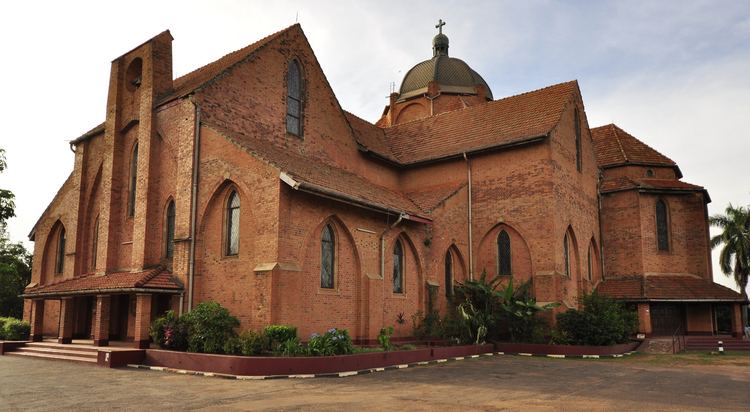Elevation 1,260 m | Region Central Uganda Time zone EAT (UTC+3) | |
 | ||
Restaurants Restaurant Y2000, Dining Hall, Maggie's Bar, K2 Restaurant Hotels Kampala Regency Hotel, Remmings Hotel, Hotel Cityway | ||
Namirembe hill kampala uganda
Namirembe is a hill in Kampala, Uganda's capital and largest city. It is also a common name given to girls in several Baganda clans. Namirembe comes from the Luganda word “mirembe” meaning “peace”. Namirembe loosely translates into Full of Peace. Legend has it that this hill was a gathering place for celebrating peace or war victory.
Contents
- Namirembe hill kampala uganda
- Map of Namirembe Kampala Uganda
- Location
- Namirembe Cathedral
- Overview
- Points of interest
- References
Map of Namirembe, Kampala, Uganda
Location
Namirembe is bordered by Makerere to the northeast, Old Kampala to the east, Mengo to the southeast, Lubaga to the southwest, Lungujja to the west, Kasubi to the northwest and Naakulabye to the north. The distance, by road, from the central business district of Kampala to Namirembe is approximately 1 mile (1.6 km). The coordinates of Namirembe Hill are:0°18'54.0"N, 32°33'34.0"E (Latitude:0.315000; Longitude:32.559444).
Namirembe Cathedral
Namirembe Hill has been the location of the main Anglican place of worship in Buganda since Bishop Alfred Tucker established the offices of the Diocese of Eastern Equatorial Africa in 1890.
Overview
The hill rises 4,134 feet (1,260 m) above sea level. It stands adjacent to Mengo Hill, the seat of the Buganda Government. The history of the two hills is intertwined, geographically, politically and religiously.
Namirembe is the location of St. Paul's Cathedral Namirembe, the main place of worship of the Anglican Church in Uganda, from the time of its construction (1915 to 1919), until the 1960s when the Cathedral became the seat of the Diocese of Namirembe. At that time, the headquarters of the Church of Uganda moved to All Saints Church in Nakasero but later on moved back to Namirembe. The Anglican Faith is the religion most closely associated with the Buganda Monarchy since the end of the religious wars of the 1890s.
Mengo Hospital, also known as Namirembe Hospital, the first hospital in Uganda, was started by Sir Albert Ruskin Cook in May 1897. At the northwestern base of Namirembe Hill are the Buganda royal burial grounds known as Kasubi Tombs. It is here, that the last four kings of Buganda are buried.
The Bulange, Buganda’s parliament building is also situated on Namirembe Hill, just across from Mengo hill. The Mengo Palace on Mengo Hill is connected to the Bulange on Namirembe Hill by a straight road, about a mile long, called Kabaka Anjagala Road ("The King Loves Me"). About halfway, the straight road is intersected by Lubaga Road. There is a roundabout for the use of ordinary travelers. However, there is a strait-way through the roundabout with a gate. That is for the exclusive use of the Kabaka when moving between the palace and the parliament building. Tradition forbids the king from going round the roundabout. He must travel straight when moving between the two locations.
Points of interest
The following points of interest lie on or near Namirembe Hill:
